This post is part of our Walk This Way series, designed to share The Walking Classroom experiences of teachers and students across the United States. This post provides a glimpse into Paula Venable’s class.
Ernest Hemingway once said, “I like to listen. I have learned a great deal from listening carefully . . . ” Without a doubt, The Walking Classroom is a most effective tool to grow great listeners.
Like many things we teach in our classroom, listening is a learned skill and requires thoughtful practice. And as a teacher, I am always looking for ways my students can share what they learned on our walks and for ways I can create a sense of engagement and accountability with the podcasts.
Strategy One: 3-2-1
One popular strategy we use in our class of walkers is what we call 3-2-1. When we return from our walk, students jot three things they learned, two questions they have, and something that surprised them. Recently, after listening to Podcast 76 Volcanoes (in the fourth grade program), one student wrote:
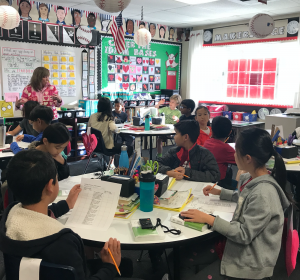 Three Things I Learned
Three Things I Learned
1. There are two kinds of volcanoes.
2. The soil around volcanoes is rich for farming.
3. There are different types of volcanoes.
Two Questions I Have
1. Are there different types of lava?
2. How can scientists more accurately predict volcanoes?
Something that Surprised Me
Volcanoes can remain dormant for 10,000 years before they are labeled extinct.
Students then find a partner and discuss what they wrote. Thoughtful and interesting conversations abound, and these provide an opportunity to further process all that was heard on the podcast.
Strategy Two: Title Time
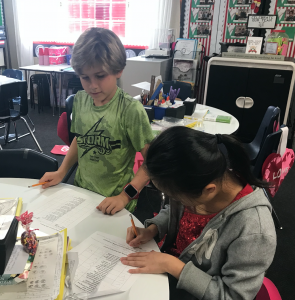 A second strategy focuses on determining main idea, a concept that we work on throughout the year. Before we begin our walk, we discuss the topic of the podcast as a class. We then predict possible main ideas. As we begin our walk, we listen with the goal of determining main idea so that we can create an interesting and informative title.
A second strategy focuses on determining main idea, a concept that we work on throughout the year. Before we begin our walk, we discuss the topic of the podcast as a class. We then predict possible main ideas. As we begin our walk, we listen with the goal of determining main idea so that we can create an interesting and informative title.
Some interesting titles came from Volcanoes (Combined-#138, 4-#76, STEM-#19), the podcast mentioned above.
- Volcanoes can be Both Harmful and Helpful
- Learning about a Variety of Volcanoes
- The Benefits and Problems with Volcanoes
As students share their titles, they include three details from the podcast that support their thinking. The opportunity to process what they heard in a more structured format benefits students in both opinion and informational writing as well.
Strategy Three: Preview and Check
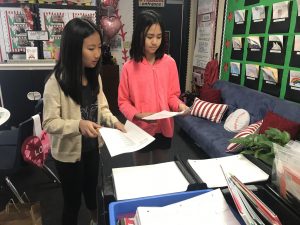 With the final strategy, I use the Teacher’s Guide to share the Synopsis of the podcast with my students and to preview the quiz questions provided. By using this approach, students can anticipate what they will hear. They are then ready to listen for specific types of information.
With the final strategy, I use the Teacher’s Guide to share the Synopsis of the podcast with my students and to preview the quiz questions provided. By using this approach, students can anticipate what they will hear. They are then ready to listen for specific types of information.
When we return to class, using Google classroom and the electronic quizzes provided by TWC, students are able to take the quiz and receive immediate feedback.
In this era of iphones and earbuds, listening skills are crucial. These three strategies support students in developing their listening, critical thinking, and speaking skills and make our walks both enjoyable and purposeful.
In next month’s post, look for some games we play after our walks that also add to our understanding of the podcasts. Happy Listening!
Paula Venable
Fourth Grade Teacher
Santiago Hills Elementary School


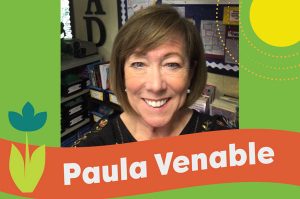
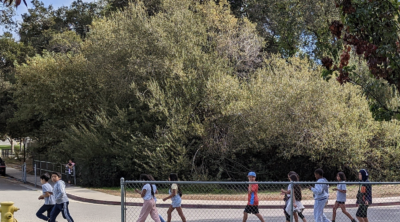
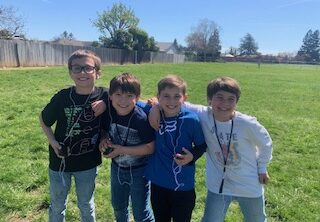
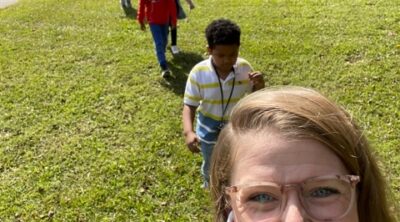
Leave a Reply